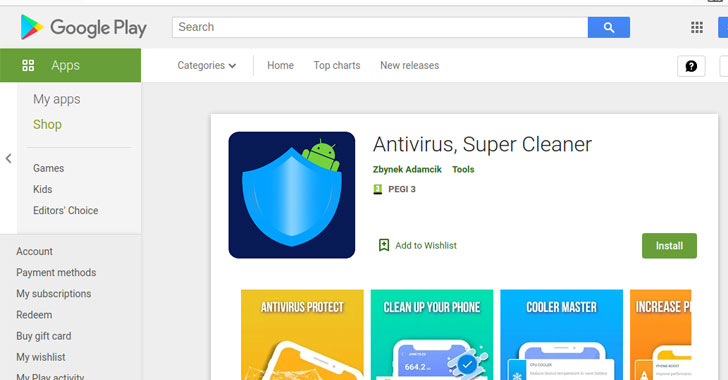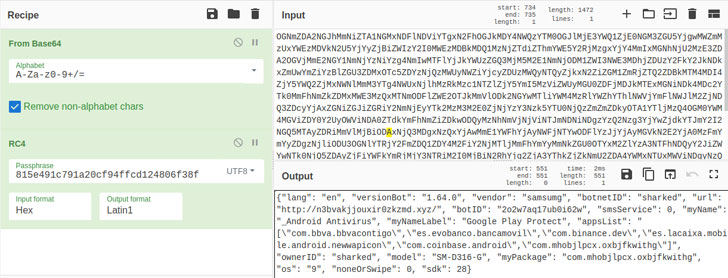Products You May Like
The threat actor behind a nascent Android banking trojan named SharkBot has managed to evade Google Play Store security barriers by masquerading as an antivirus app.
SharkBot, like its malware counterparts TeaBot, FluBot, and Oscorp (UBEL), belongs to a category of financial trojans capable of siphoning credentials to initiate money transfers from compromised devices by circumventing multi-factor authentication mechanisms. It first emerged on the scene in November 2021.
Where SharkBot stands apart is in its ability to carry out the unauthorized transactions via Automatic Transfer Systems (ATS), which stands in contrast to TeaBot, which requires a live operator to interact with the infected devices to conduct the malicious activities.
“The ATS features allow the malware to receive a list of events to be simulated, and they will be simulated in order to do the money transfers,” Alberto Segura and Rolf Govers, malware analysts at cybersecurity firm NCC Group, said in a report published last week.
“Since these features can be used to simulate touches/clicks and button presses, it can be used to not only automatically transfer money but also install other malicious applications or components.”
In other words, ATS is employed to deceive the targeted bank’s fraud detection systems by simulating the same sequence of actions that would be performed by the user, such as button presses, clicks, and gestures, in order to make the illicit money transfer.
The latest version spotted on the Google Play Store on February 28 are a number of dropper apps that also leverages Android’s Direct Reply functionality to propagate itself to other devices, making it the second banking trojan after FluBot to intercept notifications for wormable attacks.
The list of malicious apps, all of which were updated on February 10, have been collectively installed about 57,000 times to date –
SharkBot is also feature-rich in that it enables the adversary to inject fraudulent overlays atop official banking apps to steal credentials, log keystrokes, and obtain full remote control over the devices, but only after the victims grant it Accessibility Services permissions.
The findings come a week after researchers from Cleafy disclosed details of a new TeaBot variant found in the Play Store that’s designed to target users of more than 400 banking and financial apps, including those from Russia, China, and the U.S.



